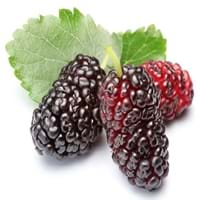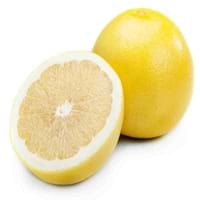Health Benefits
Anti-aging benefits, Boosts immune system, Cancer prevention, Flu treatment, Hair care, Heart care, Improves eye vision, Increases metabolic rate, Kidney stone treatment, Maintains healthy cholesterol level, Skin cleansing, Skin rejuvenation, Treatment of common cold, Treatment of skin Diseases
Arthritis prevention, Asthma treatment, Cancer prevention, Kidney stone treatment, Liver health
General Benefits
Boosts immune system, Controls blood sugar levels, Flu treatment, Improves eye vision, Maintains healthy cholesterol level, Treatment of common cold
Anti oxidant properties, Boosts immune system, Cures cough, Eye care, Fights against infections, Helps in weight loss, Improves eye vision, Maintains healthy cholesterol level, Treatment of common cold
Skin Benefits
Anti-aging benefits, Skin cleansing, Treatment of skin diseases
Anti-aging benefits, Brightens and lightens complexion, Reduces wrinkles, Treatment of dark spots
Hair Benefits
Protects hair, Regulates hair growth
Prevents hair loss, Protects hair, Regulates hair growth, Treatment of dandruff
Allergy Symptoms
Breathing difficulty, Itching, Nasal congestion, Redness of eyes, Runny nose, Sneezing
Abdominal pains, Breathing difficulty, Decrease in blood pressure, Diarrhea, Dizziness, Eczema, Hives, Lightheadedness, Nausea, Runny nose, Sneezing, Swelling of mouth, tongue or lips, Vomiting, Wheezing
Side Effects
Decrease in blood sugar levels, Allergic reaction
Allergic reaction
Best Time to Eat
Best if taken as a breakfast (or empty stomach), As a snack in the late afternoon, Don't consume at night and before bed, Eat the fresh ones, avoid mixing with any other foods, don't eat after meal., Morning time (before lunch)
As a snack in the late afternoon, Eat the fresh ones, avoid mixing with any other foods, don't eat after meal., Morning time (before lunch), Strictly avoid empty stomach
Vitamin B5 (Pantothenic Acid)
Not Available
Vitamin C (Ascorbic Acid)
Vitamin K (Phyllochinone)
Calories in Fresh Fruit with Peel
Not Available
Calories in Fresh Fruit without Peel
Not Available
Calories in Frozen Form
Not Available
Calories in Canned Form
Not Available
Type
Berry
Citrus, Tree fruit
Season
Spring, Summer
All seasons
Varieties
Charparral, Pendula, Teas, Bellaire and Lingan
Duncan, Marsh and Oro Blanco
Color
Pink, Purple, White
White
Inside Color
Pink
Creamy Yellow
Soil Type
Clay, Loam
Loam, Well-drained
Climatic Conditions
Sunny
Humid, Warm
Facts about
- It can take up to 10 years for a tree to produce mulberry fruit.
- Mulberry leaves are fed to silkworms to enhance silk production.
- In Germany, they say that devil uses root of mulberry tree to polish his boots.
- February is known as National Grapefruit Month.
- It is called as state fruit of texas.
- No mechanical devices are used while picking grapefruits, they are always handpicked.
Other Countries
Colombia, Egypt, India, Indonesia, Kenya, Mexico, Pakistan, Peru, Russia, United States of America
Argentina, India, Israel, Mexico, South Africa, Sudan, Thailand, Turkey, United States of America
Top Importer
Not Available
Europe
Top Exporter
China
United States of America
Botanical Name
Morus Alba
Citrus paradisi
Synonym
Morus atropurpurea or Morus multicaulis
Not Available
Subkingdom
Tracheobionta
Tracheobionta
Division
Magnoliophyta
Magnoliophyta
Class
Magnoliopsida
Magnoliopsida
Subclass
Alismidae
Rosidae
Species
M. alba
C. × paradisi
Generic Group
Mulberry
Citrus fruit
Difference Between Mulberry and White Grapefruit
We might think that Mulberry and White Grapefruit are similar with respect to nutritional value and health benefits. But the nutrient content of both fruits is different. Mulberry and White Grapefruit Facts such as their taste, shape, color, and size are also distinct. The difference between Mulberry and White Grapefruit is explained here.
The amount of calories in 100 gm of fresh Mulberry and White Grapefruit with peel is 43.00 kcal and Not Available and the amount of calories without peel is Not Available and 33.00 kcal respectively. Thus, Mulberry and White Grapefruit belong to Low Calorie Fruits and Low Calorie Fruits category.These fruits might or might not differ with respect to their scientific classification. The order of Mulberry and White Grapefruit is Rosales and Sapindales respectively. Mulberry belongs to Moraceae family and White Grapefruit belongs to Rutaceae family. Mulberry belongs to Morus genus of M. alba species and White Grapefruit belongs to Citrus genus of C. × paradisi species. Beings plants, both fruits belong to Plantae Kingdom.









